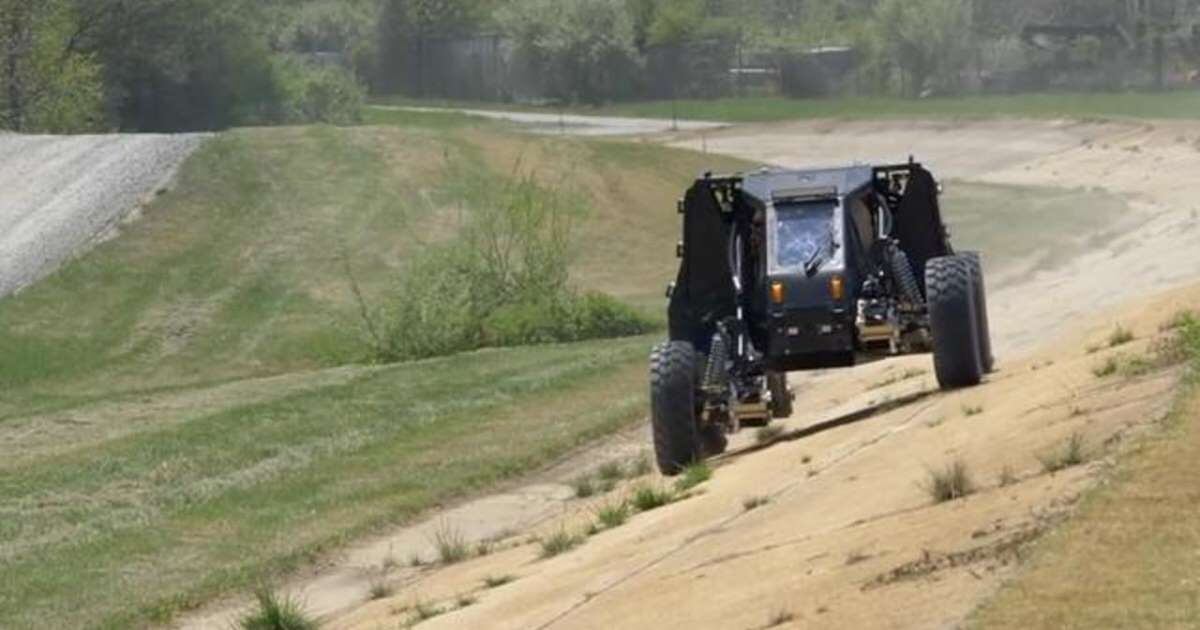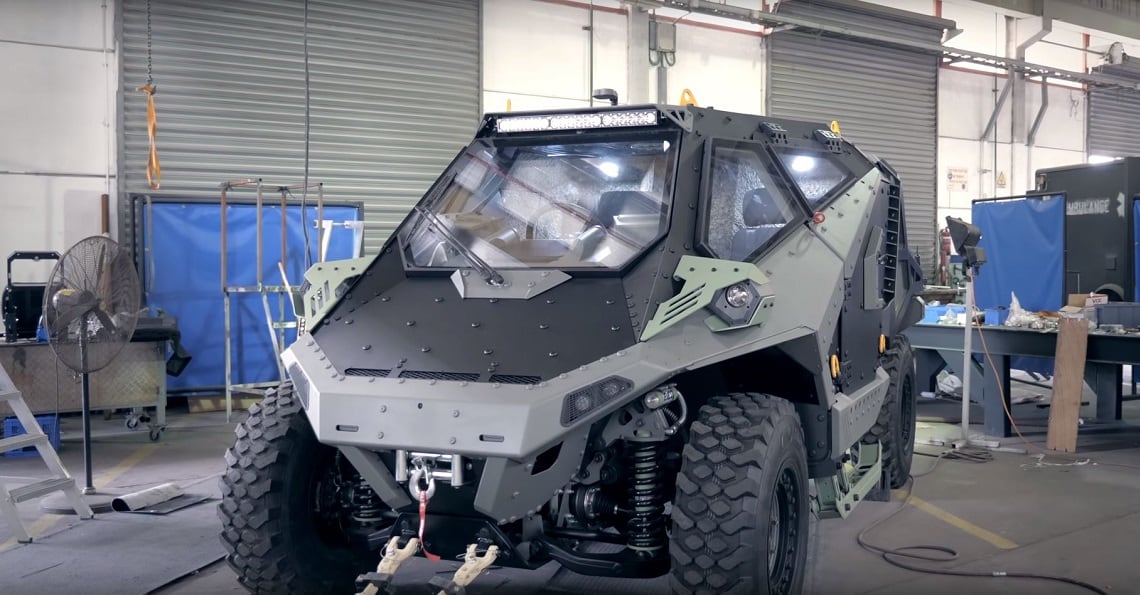Wheels are faster on hard surfaces, while a tracked design performs better on soft ground.
Rather than pushing a ground combat vehicle through terrain it doesn’t perform well on, why not just slap on some shape-shifting wheels?
A team from Carnegie Mellon University’s National Robotics Engineering Center demonstrated the feasibility of such shape-shifting wheel-track mechanisms for the Defense Department recently.
The new technology, dubbed a “reconfigurable wheel-track,” can transition from a round wheel to a triangular track and back again while the vehicle is in motion — allowing for an instant improvement in tactical mobility on shifting terrain.
The wheel-track is part of the Defense Advanced Research Projects Agency’s Ground X-Vehicle Technologies, or GXV-T, program, which aims to improve mobility, survivability, safety, and effectiveness of future combat vehicles without piling on more armor, according to a June 22 press release.
“We’re looking at how to enhance survivability by buttoning up the cockpit and augmenting the crew through driver-assistance aids,” said Maj. Amber Walker, the program manager for GXV-T in DARPA’s Tactical Technology Office. “For mobility, we’ve taken a radically different approach by avoiding armor and developing options to move quickly and be agile over all terrain.”
The DARPA initiative is looking to build a future in which combat vehicles can traverse up to 95 percent of off-road terrain, including slopes and various elevations.
The new wheel-track design is just one of the contract awardees that recently demonstrated advances on a variety of potentially groundbreaking technologies that meet the program’s goals.
DARPA also showcased a new “multi-mode extreme travel suspension” system that allows for "high-speed travel over rough terrain, while keeping the vehicle upright and minimizing occupant discomfort,” the agency said in its statement.
The suspension can move 42 inches upward and 30 inches downward, and keeps itself level on steep grades by adjusting each wheel.

Other enhanced mobility designs include an electric in-hub motor built by QinetiQ, which puts motors directly inside the wheels, offering heightened acceleration and maneuverability with optimal torque, traction, power, and speed over rough or smooth terrain.
“QinetiQ demonstrated a unique approach, incorporating three gear stages and a complex thermal management design into a system small enough to fit a standard military 20-inch rim,” according to the release.
Another new development could impact a vehicle crew’s awareness.
RELATED

Most combat vehicles have small windows. This improves the protection offered to troops, but limits their visibility to spot threats and targets. The GXV-T program is looking at sensor technologies to give mechanized troops their eyes back.
One design by Honeywell International boasts an enhanced 360-degree awareness suite through virtual windows. The company showed that capability off in a windowless cockpit of an all-terrain vehicle with an opaque canopy, according to the DARPA release.
“The 3D near-to-eye goggles, optical head-tracker and wrap-around Active Window Display screens provide real-time, high-resolution views outside the vehicle,” the release reads. “In off-road courses, drivers have completed numerous tests using the system in roughly the same time as drivers in [ATVs] with full visibility.”
No fielding date has been announced by DARPA’s offices for the new mobility technologies, but the program could help solve many of the ongoing mobility issues troops have experienced in recent conflicts.
For a full breakdown of the technologies being vetted through DARPA’s GXV-T program, check out this YouTube video by the agency.
Kyle Rempfer was an editor and reporter who has covered combat operations, criminal cases, foreign military assistance and training accidents. Before entering journalism, Kyle served in U.S. Air Force Special Tactics and deployed in 2014 to Paktika Province, Afghanistan, and Baghdad, Iraq.









